In February I wrote about how US airlines would be getting 12 additional daytime landing slots at Tokyo’s Haneda Airport. This came thanks to talks concluding between the US and Japan, which should be available by the summer of 2020, in time for the Olympics.
In total American, Delta, United, and Hawaiian, requested 19 additional Haneda frequencies, though there were only 12 available. So given that there were more requests than available slots, the DOT had to go through a process to decide how to award them.
Then in mid-May the DOT tentatively granted 12 slots to US airlines, though there’s always a period where the public can comment.
Well, this has now been finalized, and nothing has changed. 12 US daytime Haneda slots have now formally been granted to US airlines.
As I explained in the past, the DOT makes these decisions based on what they think maximizes the benefit for consumers, and based on taking into account the order in which airlines prioritize these requests (below is a chart showing the order in which airlines prioritized these requests).
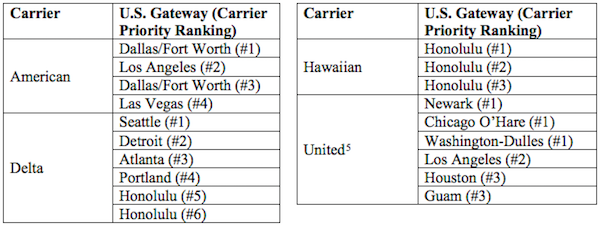
For context, US airlines currently operate the following six daily flights to Tokyo Haneda:
- American flies from Los Angeles
- Delta flies from Los Angeles and Minneapolis
- United flies from San Francisco
- Hawaiian flies from Honolulu and Kona

So, how did US airlines do with their requests?
In this post:
Delta granted five of six Haneda slots
Arguably Delta is the biggest winner here. Delta requested a total of six Haneda slots, and they were granted the following five:
- 1x daily Atlanta to Haneda flight using 777-200
- 1x daily Detroit to Haneda flight using A350-900
- 1x daily Honolulu to Haneda flight using 767-300
- 1x daily Portland to Haneda flight using A330-200
- 1x daily Seattle to Haneda flight using A330-900neo
They weren’t granted the following slot:
- 1x daily Honolulu to Haneda flight using 767-300
Given the number of airlines flying between Honolulu and Tokyo, I think it’s not too surprising they were rejected for the additional Honolulu to Haneda slot. The airline has already announced that they plan to cease operations from Tokyo Narita as a result of this.
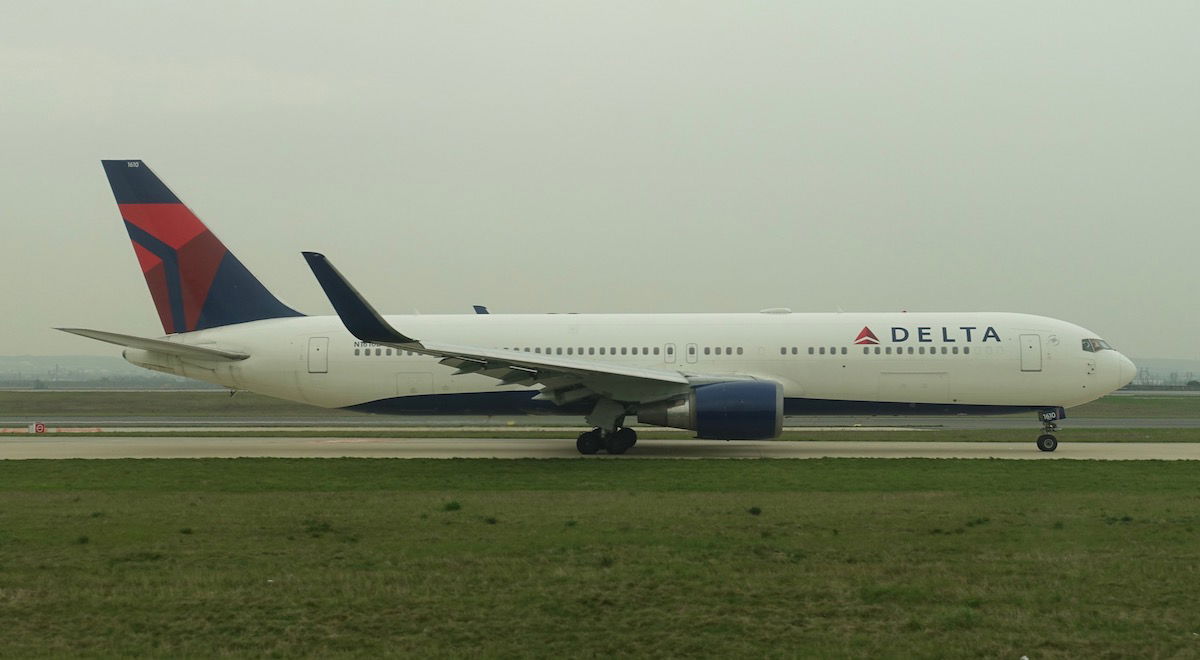
United granted four of six Haneda slots
United requested a total of six Haneda slots, and they were granted the following four:
- 1x daily Chicago to Haneda flight using 777-200
- 1x daily Los Angeles to Haneda flight using 787-10
- 1x daily Newark to Haneda flight using 777-200
- 1x daily Washington Dulles to Haneda flight using 777-200
They weren’t granted the following slots:
- 1x daily Guam to Haneda flight using 777-200
- 1x daily Houston to Haneda flight using 777-200
Here’s the DOT’s explanation for why they weren’t granted the Guam to Haneda slot:
United’s Guam proposal would require the allocation of a scarce Haneda slot pair to provide short haul flights in a leisure oriented market. While the Department appreciates the benefits that passengers might enjoy with access to the downtown Haneda airport, the large Guam-Tokyo market is already well-served at Narita, and the Department tentatively finds that an allocation here would not represent the best use of a limited Haneda opportunity.
And here’s their explanation for why they’re not granting the Houston to Haneda slot:
The Department recognizes that United’s Houston proposal would offer connections to Haneda from 32 U.S. airports, and would provide consumers in the Southern United States with an alternate U.S.-Haneda gateway to those proposed by American and Delta. The Department tentatively notes, however, that many of the cities with proposed connections over United’s Houston hub, including a number in the Southern United States, would enjoy one-stop service over other gateways proposed by United with higher priorities in this proceeding, and in some cases with less circuity than would be experienced on connections over Houston. In view of the potential benefits of the other proposals that the Department is tentatively selecting here, and considering the carrier’s placement of this proposed service as part of its lowest-ranked priority, the Department has tentatively decided not to make an allocation for United’s Houston-Haneda proposal.

American granted two of four Haneda slots
American requested a total of four Haneda slots, and they were granted the following two:
- 1x daily Dallas to Haneda flights using 777-200ERs
- 1x daily Los Angeles to Haneda flight using 787-8
They weren’t granted the following slots:
- 1x daily Dallas to Haneda flights using 777-200ERs
- 1x daily Las Vegas to Haneda flight using 787-8
The DOT not granting the second daily Dallas to Haneda slot makes sense, since they don’t find the demand to be significant enough to warrant it. But what about the Las Vegas to Haneda slot?
The Department recognizes that Las Vegas is the fifth-largest mainland U.S.-Tokyo market, however, American proposes to offer connections to only five U.S. points over Las Vegas, four of which are being tentatively selected in this proceeding for nonstop U.S.-carrier Haneda service of their own.14 In view of the potential benefits of the other proposals that the Department is tentatively selecting here, and considering the carrier’s placement of this proposed service as its lowest-ranked priority, the Department has tentatively decided not to make an allocation for American’s Las Vegas-Haneda proposal.
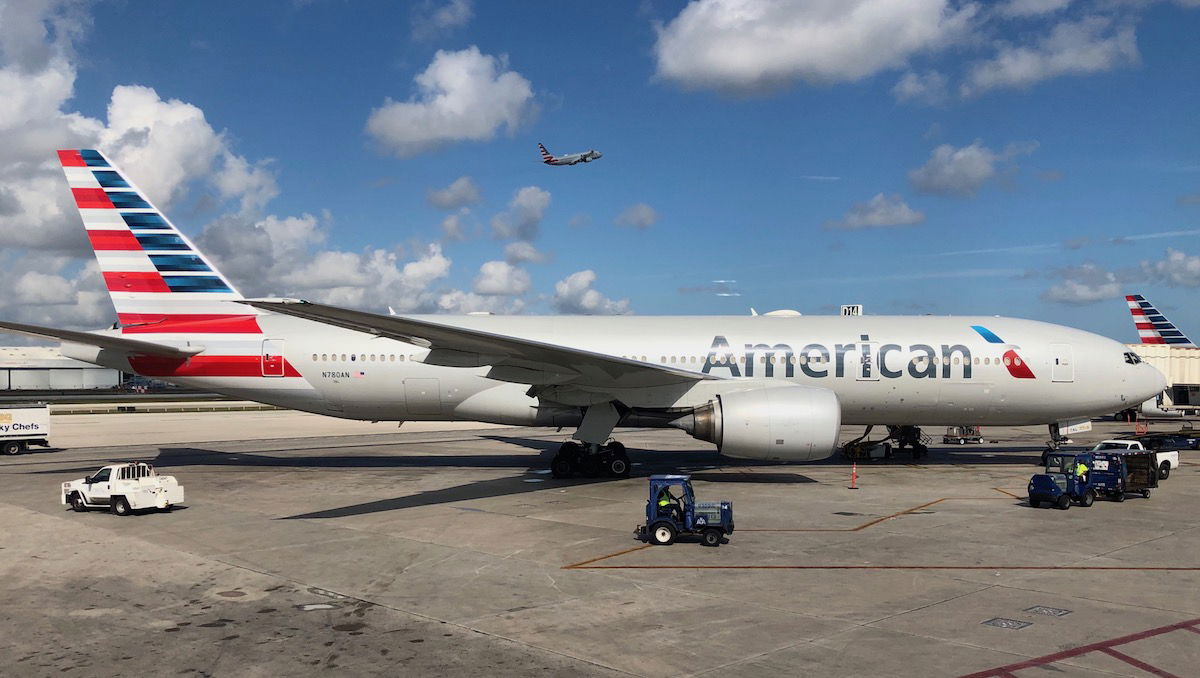
Hawaiian granted one of three Haneda slots
Hawaiian proposed adding 3x daily Honolulu to Haneda flights operated by A330-200s, for a total of 4x daily flights in the market. The DOT just granted them one additional frequency, though.
That’s not too surprising, given that this is a crowded market.
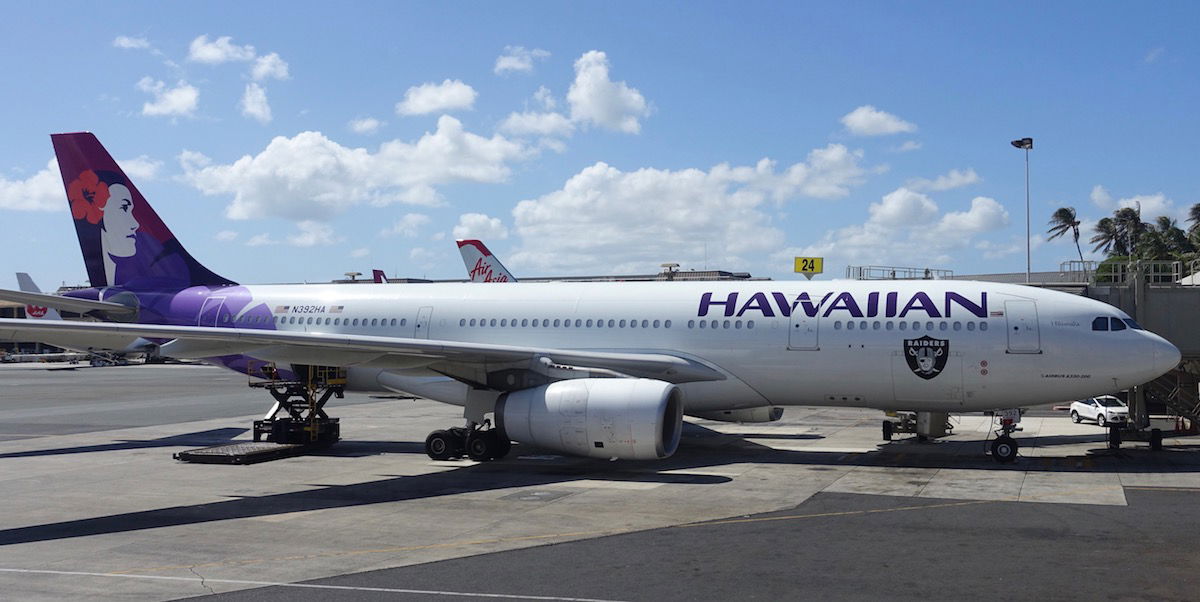
Bottom line
The DOT has now finalized the 12 Haneda slots that they’ve had to award, so we should expect airlines to be revealing details about these routes pretty soon.
I’d say the DOT’s decisions are more or less in line with what you’d expect. They consider how much demand they perceive there to be for these routes, and balance that with the ways in which airlines prioritize the routes they want most.
In general:
- The Honolulu to Haneda rejections aren’t surprising, given what a crowded market it is
- I find the Las Vegas to Haneda rejection to be an interesting one, as the DOT argues that there are limited connecting opportunities, though also notes that it’s a big market; I imagine American would have gotten it approved if they ranked it higher, but they ranked it as their last choice
- It seems United’s Houston to Haneda route was rejected because they prioritized it last, and it offered no meaningful benefit for connecting passengers that wasn’t offered via another hub
- Perhaps United’s Guam to Haneda rejection is the most interesting, as the DOT argues it’s primarily a leisure route and that Narita will do for that
Are there are any decisions here that you find surprising?
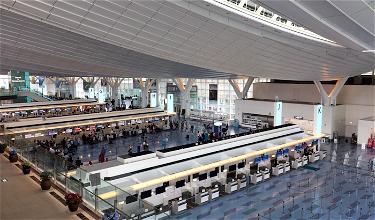

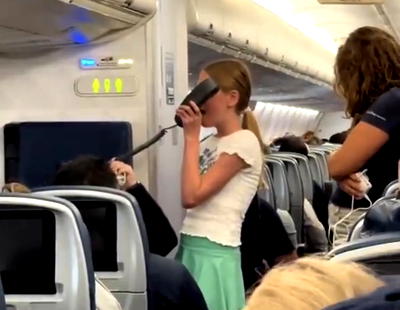
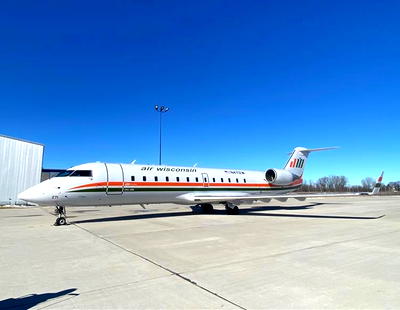

Does the DOT analyze all foreign markets, in this capacity, that US airlines fly to? Or is this particularly unique as these slots have opened up at now-coveted Haneda?
Most people are forgetting that Delta likely received more slots because they do not have a partner in Japan like United and American. This keeps it more balanced.
I really wish American had gotten that LAS slot. Connecting through LAX or DFW (or whatever other airport) isn't that bad, but us Las Vegans who like to travel would love more international direct flights, especially to Asia.
Very sad UA did not get IAH, but I agree, it seems that they messed this one up by low priority...
I read that of the 50 new slots being created at Haneda, 12 of them are going to US carriers to serve the US-Japan route, and 12 more of them are going to ANA and JAL. We know that some of us prefer to fly ANA/JAL over US airlines for this route, but there is a shortage of flights to Haneda, and most of them arrive at really weird times of the night.
What I...
I read that of the 50 new slots being created at Haneda, 12 of them are going to US carriers to serve the US-Japan route, and 12 more of them are going to ANA and JAL. We know that some of us prefer to fly ANA/JAL over US airlines for this route, but there is a shortage of flights to Haneda, and most of them arrive at really weird times of the night.
What I want to know is this:
What are ANA/JAL planning to do with these additional 12 slots at Haneda?
Are they dedicated to US-Japan routes, like the 12 slots being divided among the US carriers? My reading of the Japanese new reports on this matter are rather conflicting. Some of them say those 12 slots for ANA/JAL are also for US-Japan routes. Some of them say otherwise. Also, I haven't found how these 12 slots are going to be divided between ANA and JAL.
It would be wonderful if some or all of these 12 additional slots are for US-Japan flights, which will give us more options to fly ANA/JAL. Hopefully, some of these flights will have a more attractive landing times at Haneda as well.
Lacking the “5th Freedom” hub Northwest (later Delta) used to have in Tokyo; plus the proliferation of nonstops to nearly all of the major destinations/hubs in Asia after aircraft with enough range to bypass/overfly Tokyo (such as HKG, TPE, SIN, MNL, ICN, PEK, PVG and several other cities that in years’ past could not be reached nonstop from NYC); and of course, vastly outmatched by the ANA/United and Japan Airlines/American Airlines anti-trust immunized joint-venture alliance...
Lacking the “5th Freedom” hub Northwest (later Delta) used to have in Tokyo; plus the proliferation of nonstops to nearly all of the major destinations/hubs in Asia after aircraft with enough range to bypass/overfly Tokyo (such as HKG, TPE, SIN, MNL, ICN, PEK, PVG and several other cities that in years’ past could not be reached nonstop from NYC); and of course, vastly outmatched by the ANA/United and Japan Airlines/American Airlines anti-trust immunized joint-venture alliance juggernauts, and the thousands of “code-share” connection permutations available to those two airline alliance pairings that Delta completely lacks (and that ANA was so fearsome of Delta gaining the chance of starting a mini-hub or “focus city” at Haneda had it prevailed in its efforts earlier this decade to take over a little known in the USA Japanese airline called Skymark after that airline went bankrupt that it agreed to take-on Skymark’s order for the three Airbus A380s that ANA is introducing next week for its Tokyo-Honolulu flights in order to win Airbus’s approval of its bid for Skymark over Delta’s), Delta’s traffic for nonstops between JFK and Tokyo is disadvantaged in that it would largely be limited to Origin and Destination (O & D) passengers on a single daily frequency (if that), whereas its USA network legacy counterparts, United and American, along with their corresponding Japanese aligned, joint-venture partners, ANA and Japan Airlines, respectively, can offer multiple daily nonstops that high yielding business travelers prefer, and which offers a wealth of connections on their partner airlines on both sides of the Pacific (USA east coast and beyond, too) that Delta simply cannot match with it lacking any kind of alliance partner in Tokyo that could feed enough connecting passengers to make daily nonstops, much less the multiple frequencies that would be required to make it competitive for corporate travelers.
So, despite Delta’s huge presence in NYC, and its dominance at both JFK and LaGuardia airports versus United’s fortress hub across the Hudson River at Newark, between the two aforementioned alliances between Japan’s pair of dominant airlines and Delta’s USA network legacy counterparts; plus the proliferation of nonstops on all of the leading Asian-based airlines at JFK Airport that barely exists on a fraction of the scale at United’s fortress hub at Newark that otherwise allows for United to offer an array of nonstops to many destinations in Asia from its hub there that Delta does NOT offer at JFK, just doesn’t make sense at this time for Delta to enter the NYC-Tokyo market when it would face overwhelming competition in the form of multiple nonstops to both of Tokyo’s airports, HND and NRT, on airlines that enjoy government sanctioned collusion to set schedules, capacity and fares, and “code-shares” to a wealth of destinations beyond Tokyo that Delta simply cannot hope to match if it dared to enter a city-pair where behemoths would likely crush it.
However, and again getting back to my earlier comments, that the current, largely anti-consumer administration awarded Delta five of the six daytime slot-pairs needed for the routes it applied for, out of the 12 total that were up for grabs and fought over by four airlines (American, Delta, Hawaiian and United), or 41.7% of the available daytime slot-pairs, is as much of a “win” for Delta (and its shareholders), as it is for flyers who will have more flights on more airlines (and usually lower fares when meaningful competition exists) to choose from between the USA and Tokyo once these new flights begin.
So, for sure, this route award, and the opportunity for Delta to offer a total of seven daily nonstops at Haneda (after including its two existing LAX and MSP nonstops), is a big, big plus!
I thought the original reason JFK-NRT was cut was due to competition from JL and NH, and then especially when they introduce their HND flights. So perhaps many thought they should have proposed JFK to get back into the market, but I think their main priority was to shift their existing NRT operation to HND and they could feed JFK traffic through DTW
With family in the Philippines, I’ve booked several itineraries via Delta’s existing MSP-HND flights interlining with Philippines Airlines at HND, and via ICN with its anti-trust immunized joint-venture partner Korean Airlines.
In all instances, everything went very well; flights were on-time; connections went smoothly, even for those whom required wheelchair assistance; and everyone was happy with the service on the ground and in the air they experienced.
So, as far as MNL service is concerned,...
With family in the Philippines, I’ve booked several itineraries via Delta’s existing MSP-HND flights interlining with Philippines Airlines at HND, and via ICN with its anti-trust immunized joint-venture partner Korean Airlines.
In all instances, everything went very well; flights were on-time; connections went smoothly, even for those whom required wheelchair assistance; and everyone was happy with the service on the ground and in the air they experienced.
So, as far as MNL service is concerned, cutting NRT using Delta metal, likely won’t make a difference for most passengers since there are more than ample alternative options.
Only downside is Korean Airlines advanced seat selection options are notoriously limited/restricted for its lowest fare categories - so just beware that if one is purchasing the lower fare categories, don’t be surprised when advanced seat selection options are among the worst seats on the plane - and the reps were either largely powerless to change the seat assignments to anything but other crappy seats, or downright rude and dismissive when attempting to get something better!
Also, for special meals on Korean Airlines, a family member who is vegetarian said the lacto-ovo option was flat-out tasteless and awful; while the spicier Hindu option chosen for their return segments was much better.
And our 8-years old niece tried most of the children’s meals and didn’t like any of them - except for the prepackaged snacks that they come with.
Otherwise, the 10 other adults who flew DL/KE to/from MNL didn’t have special meal requests liked what they ate, especially Korean Airlines’ signature Bibimbap.
While our family patriarch who flew solo via MSP/HND interlining with Philippines Airlines at HND in both directions found ALL of his flights on Delta and Philippines Airlines to be very good.
Although domestic, inter-island flights, my family and I flew several Philippines Airlines flights during our 2018 Xmas family reunion with all but one (of many when including everyone’s flights) being very good, including those that I flew.
There was just one domestic PR flight that was several hours late despite the weather being nearly perfect that morning; which sadly caused three family members to miss the entire day touring Bohol (where the Tarsiers’ Conservation Area and breathtaking Chocolate Hills are).
But, otherwise, we found Philippines Airlines’ service on the ground, and in the air, to be very good for those who may not be familiar with that airline’s vastly improved service in recent years.
So, overall, Delta’s gain of five new daytime slot pairs at Tokyo’s more convenient to downtown and vastly preferred Haneda Airport is a big win for travelers who believe that a viable competitor to the two other anti-trust immunized joint-venture alliances between ANA & United or Japan Airlines & American will make for better choices and more competitive fares for business travelers and leisure travelers alike between the two countries - and possibly beyond!
In fact, given the decidedly anti-consumer agenda of the present administration, it’s a refreshing and welcome surprise that Delta emerged as the biggest winner in this coveted sweepstakes to gain flights in the very lucrative market between the USA and Tokyo.
I’m surprised DL didn’t ask for a JFK-HND route. Yes, there are direct flights to HND on both ANA and JL as well as an upcoming EWR-HND flight on UA (in addition to each of those airlines having a daily flight to NRT as well), so perhaps the NYC-TYO market is pretty saturated already, but the fact is there isn’t a direct sky team option between New York and Tokyo, and seeing that this is...
I’m surprised DL didn’t ask for a JFK-HND route. Yes, there are direct flights to HND on both ANA and JL as well as an upcoming EWR-HND flight on UA (in addition to each of those airlines having a daily flight to NRT as well), so perhaps the NYC-TYO market is pretty saturated already, but the fact is there isn’t a direct sky team option between New York and Tokyo, and seeing that this is quite a premium market, I’m a bit perplexed delta isn’t trying to capitalize on it with a jfk-hnd route.
I feel Las Vegas would have benefited from the American airline's service, given that there is no direct connection from Japan. It would have added a valuable service from LAS to East Asia, by a U.S Airline. Currently, the only direct flights from LAS to East Asia are Korean Air's service to ICN and Hainan's service to PEK.
@Andrew:
That's what I eventually deduced from his comment, too. I think your point about holding an auction was the missing link in his logic leap from free market to socialism. Good call!
United mistreats Houston all the time and treats us as a cash cow to subsidize the Chicago market.
I just returned from Laos through NRT to Houston and would have preferred HND for many reasons.
@Paul, yes and no, the purpose of the flights are to open new markets specifically to HND, which you're right is largely O/D, however the entire purpose of the regulatory oversight by the DOT is to keep the playing field as close to level as possible when it comes to competition. So the flights that were awarded in the end took into consideration existing options, whether direct (ANA HND to ORD, which United doesn't presently...
@Paul, yes and no, the purpose of the flights are to open new markets specifically to HND, which you're right is largely O/D, however the entire purpose of the regulatory oversight by the DOT is to keep the playing field as close to level as possible when it comes to competition. So the flights that were awarded in the end took into consideration existing options, whether direct (ANA HND to ORD, which United doesn't presently operate) or one-stop connections within the US. Because they don't have a partner that already operates to any of their markets, Delta was at a clear disadvantage, which is why it should be no surprise they were awarded largely what they asked for. Delta will now have a much smaller gap with their competitors in the number of one-stop and direct flights to HND. You may not agree with it but the government views that as fair for the consumer.
@ChrisC I'm pretty sure after going through all this they are not allowed to just reallocate the slot for another airport. There is probably a whole DOT process they have to go through to apply to do something like that.
I'll continue to fly JAL and ANA to Japan. For some people these may not be options depending on their location and for those pairings this would be good news.
Guru:
I don’t see why the govt should care about alliance partners here at all. This is about the best way to route new flights into the US from Tokyo - flights that are much less likely to result in connections from Tokyo to the rest of Asia.
@AdamR - my guess is that @Alex is saying a government entity making decisions about what individual consumers want directly contradicts a thriving free market. He's saying, why should the bureaucracy decide who gets the opportunity to fly to Tokyo? Let the market sort itself out without government interference. I understand there are physically constrained resources here (i.e. a limited number of slots based on physical airport capacity) - but the routes could've just been...
@AdamR - my guess is that @Alex is saying a government entity making decisions about what individual consumers want directly contradicts a thriving free market. He's saying, why should the bureaucracy decide who gets the opportunity to fly to Tokyo? Let the market sort itself out without government interference. I understand there are physically constrained resources here (i.e. a limited number of slots based on physical airport capacity) - but the routes could've just been auctioned off to the highest bidders, or some other process that didn't involve people in a government agency making decisions about what route served the collective good the best.
If Delta moves their Tokyo service to Haneda instead of Narita, in addition to Singapore, Manila will also be affected. Seems like DL is happy to give up on SE Asia routes in favor of their JV with Korean Air and letting KE serve passengers flying to Asia via ICN.
@Alex:
Curious to know what aspect of the rationale provided by the DOT you considered "socialist". If there's anything this administration is staunchly opposed to, it's socialism or any program aimed towards a common good. The reasoning the DOT has provided - save Hawaiian's slots, which I agree are "meh" and a little eyebrow-raising - are all based on ensuring free market is allowed to thrive by providing consumers ample choice. Can you please explain...
@Alex:
Curious to know what aspect of the rationale provided by the DOT you considered "socialist". If there's anything this administration is staunchly opposed to, it's socialism or any program aimed towards a common good. The reasoning the DOT has provided - save Hawaiian's slots, which I agree are "meh" and a little eyebrow-raising - are all based on ensuring free market is allowed to thrive by providing consumers ample choice. Can you please explain what's so socialist about that?
@Paul, its not that surprising that Delta was the most successful. They have no Japanese airline partners while AA and United both do. Delta should be walking away with the most opportunity here, as its the most fair for the consumer. Gives more options than just the two partnerships provide.
In regard to the fact that most of us prefer to fly this route with ANA/JAL over American/Delta/United, I am happy to see that Japanese airlines are also (supposedly) getting 12 additional slots at Haneda as well, so there will be more choices for those who prefer to fly ANA/JAL to/from Japan.
Here's one article from Kyodo via Japan Times regarding this:
https://www.japantimes.co.jp/news/2019/02/12/national/half-new-slots-haneda-airport-given-japanese-u-s-airlines/#.XN6wSskpCUk
In regard to the fact that most of us prefer to fly this route with ANA/JAL over American/Delta/United, I am happy to see that Japanese airlines are also (supposedly) getting 12 additional slots at Haneda as well, so there will be more choices for those who prefer to fly ANA/JAL to/from Japan.
Here's one article from Kyodo via Japan Times regarding this:
https://www.japantimes.co.jp/news/2019/02/12/national/half-new-slots-haneda-airport-given-japanese-u-s-airlines/#.XN6wSskpCUk
AA would have been much better served trying for PHX-HND as opposed to LAS.
It would have created an operational challenge having one 777 either based in LAS or rotating through DFW.
The crew part becomes a challenge as well with managing delays, sick calls, etc.
As a passenger it's probably more reliable to connect to HND via LAX or SFO (or even HNL!).
I do wish there was a non stop either NRT or HND to MIA
The routes should be allocated based on the free market not by an absurd socialist government allocation system
The arguments for rejecting Guam could equally apply to Hawaii. Do US consumers really benefit from flights mainly aimed at Japanese tourists?
ANA and JAL are just so much better than the US carriers. They also fly to many locations in the US. Not sure why would anyone choose United over ANA to Tokyo...
AA really missed the boat not naming any east coast hubs or ORD. Those would've been the best options. To those above, I can see LAS/PHX/PDX not being favored since LAX is super connected and SFO/SEA have good connections well. Surprised IAH didn't get it, but as noted it's probably because UA ranked it low. Don't the feasibility of MIA/CLT/PHL to HND but those would seem like better options since they aren't as well connected....
AA really missed the boat not naming any east coast hubs or ORD. Those would've been the best options. To those above, I can see LAS/PHX/PDX not being favored since LAX is super connected and SFO/SEA have good connections well. Surprised IAH didn't get it, but as noted it's probably because UA ranked it low. Don't the feasibility of MIA/CLT/PHL to HND but those would seem like better options since they aren't as well connected. Would definitely need a long-range plane like a 787 for MIA-HND since it's almost the exact same distance as LAX-SYD!
Does the DOT analyze all foreign markets, in this capacity, that US airlines fly to? Or is this particularly unique as these slots have opened up at now-coveted Haneda?
@Willem
I see DL will close down NRT completely. With the A350, they should eventually make SEA their Asian gateway.
Delta does have some dark influence. Or just lucky (i.e. having no 737MAX)
I would say PDX/SEA > LAS > PDX/SEA. DL should get either one but not both over LAS.
And what is AA thinking, no PHL/CLT or PHX.
I guess airlines see it as O&D traffic while DOT considers 1 stop service.
So with these changes we will probably see Delta leave Narita entirely. I wonder what will happen to the current NRT SIN flight; will they abandon Singapore or start nonstop service from the US?
Creditian - Delta/ Northwest has flown PDX-Tokyo since 2004. This is a long-established route, they're just changing airports.
AA should do PHX rather than LAS. Given AA has only 2 gateways to Asia, and their east coast hubs are pretty lame. That's why AA had to apply 2nd DFW. They got no choice. However, PHX would be better than LAS when establishing another Asia gateway.
I can see no reason for DL requesting PDX since their hub is SEA. PDX will surely die fast like AA's JFK-HND. They should do 2nd LAX given...
AA should do PHX rather than LAS. Given AA has only 2 gateways to Asia, and their east coast hubs are pretty lame. That's why AA had to apply 2nd DFW. They got no choice. However, PHX would be better than LAS when establishing another Asia gateway.
I can see no reason for DL requesting PDX since their hub is SEA. PDX will surely die fast like AA's JFK-HND. They should do 2nd LAX given CI, KE, MU have massive connections at HND.
UA made a huge mistake ranking IAH too low where they have numerous Asian customers. UA can solely rely on Houston local market to feed this flight. IAD is not as important as IAH and has less demands from Asians. EWR can cover and might kill IAD eventually.
UA already operates IAD-NRT so will they drop it and operate IAD-HND instead, or operate both?
Also, it's interesting the approvals all seem to be for a specific aircraft type (787-800, 777-200, etc). What happens if an airline wants to change equipment -- do they need a new DOT approval?
@Miles - the gov application said summer of 2020.
If you read into the rational of not giving AA the LAS slot, you should also duplicate that for DL PDX or HNL operation. Neither HNL or PDX is a DL HUB or one of their “focus” cities.
Is United the only one using some of the HND frequencies to supplement NRT (EWR and LAX) as opposed to moving NRT service to HND? Maybe HA is too?
Any thoughts on how these decisions mesh with the premise of having US airlines specifically not just switch service from NRT to HND?
@D3 the Beijing Olympics in 2022 are winter not summer games.
Lucky - how fixed are these slots? Could say American switch it’s LAX slot to LAS or would ukd the slot be taken back and given to an airline that would run an LAX - HND service?
Given how many other connections are available from the West Coast...is it really that important to add both Portland AND Seattle vs. adding Vegas? I'm surprised they gave Delta 5 and AA 2. I agree with someone's comment that it's probably not very bright that AA ranked a second DFW flight over LAS.
I also wonder if they'd have had a shot at PHL for some regional diversity, similar to how UA got Newark and Dulles.
Las Vegas would be mostly people from Japan visiting Vegas and so just really benefiting one community. I’m also guessing AA added it to the list as a way to extend their request list with an option that was 100% not being selected (versus adding CLT, PHL, MIA, etc) in the hopes the DOT would approve the other 3 real options while not being viewed as giving AA every ask
Kind of bummed about the Houston-Haneda route not happening but sounds like it’s United’s fault for prioritizing it so low.
I hope something similar will happen for the Beijing summer Olympics in 2022 with their new airport Daxing .
American needs to get a ORD PKX route going with a 77W.
Any indication when the airlines will start flying these routes?
I actually thought American would get Las Vegas. Surprised there was not more lobbying for that from the city.
So glad Delta got pretty much what they were after!